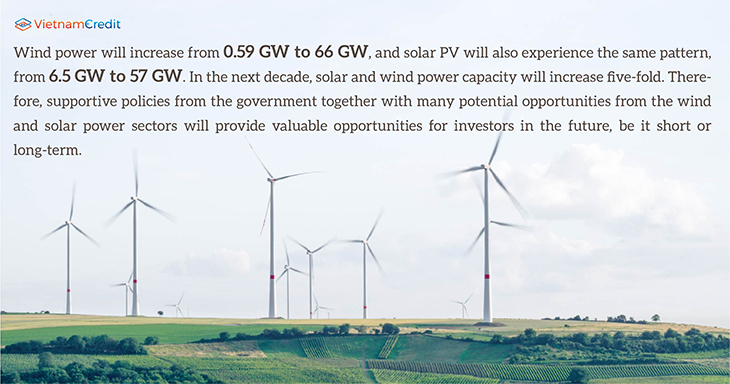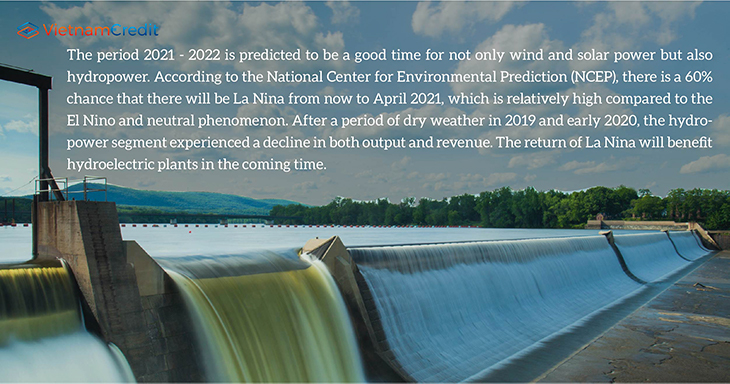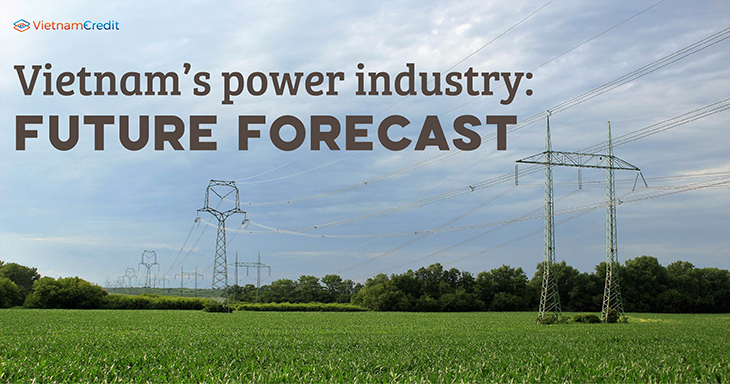According to a recent report by Rong Viet Securities Company (VDSC), although Vietnam still relies heavily on thermal power, solar power and wind power will be the main growth drivers for the power industry in the coming years.
Solar and wind power to be the main growth drivers
Since 2017, the Ministry of Industry and Trade has shifted its focus from thermal power to renewable energy because of environmental factors and low cost. In the recent draft Electricity Master Plan VIII, the Ministry of Industry and Trade shows its focus on renewable energy and transmission line upgrading from now to 2045.
In the near future, Vietnam will still mainly rely on thermal power, but solar and wind power will be the main growth drivers in the coming years.
In particular, wind power will increase from 0.59 GW to 66 GW, and solar PV will also experience the same pattern, from 6.5 GW to 57 GW. In the next decade, solar and wind power capacity will increase five-fold. Therefore, supportive policies from the government together with many potential opportunities from the wind and solar power sectors will provide valuable opportunities for investors in the future, be it short or long-term.

Though there are still many potentials for solar energy to develop, incentives from the government are no longer attractive. However, with Power Plan VIII, the Ministry of Industry and Trade still focuses on solar and wind power, so it is believed that the government will soon come up with a new policy which is attractive enough to encourage the new investment in energy projects aimed at solving power shortage.
In addition, floating solar and rooftop solar PVs are expected to be focused in the near future as the current capacity of this segment is still lower than planned.
Regarding wind power, this segment's growth story is following the growth pattern of solar power in 2019 when the electricity price is quite attractive due to the wind power promotion policy of the Ministry of Industry and Trade.
The price of electricity for inland projects will be 8.5 USD / kWh, and that for onshore and offshore projects will be 9.8 USD / kWh. The most important condition is that projects will have to COD before November 30, 2020.
There are currently many proposals to extend this period from 2021 to 2023 under the pretext of Covid-19 but there has been no official move from the government. In general, there are two difficulties that wind power companies may face: the Covid-19 outbreak that can slow the speed of plant construction, and the deadline before November 2021.
These tight market conditions will benefit companies with a lot of experience in rushing construction, exploiting areas where there have not been many power plants to operate to avoid capacity bottlenecks, or those that are able to mobilize capital simultaneously for projects of enterprises.
Hydropower capacity is expected to increase
The period 2021 - 2022 is predicted to be a good time for not only wind and solar power but also hydropower. According to the National Center for Environmental Prediction (NCEP), there is a 60% chance that there will be La Nina from now to April 2021, which is relatively high compared to the El Nino and neutral phenomenon. After a period of dry weather in 2019 and early 2020, the hydropower segment experienced a decline in both output and revenue. The return of La Nina will benefit hydroelectric plants in the coming time.

In the long run, hydroelectric capacity is expected to increase slightly over the next decade due to dependence on weather. Even so, the hydropower potential is almost fully exploited at the moment and is not expected to expand much further in the coming years.
In terms of capital, many foreign banks commit to support companies operating in renewable energy in the coming time. According to ADB's 2019 annual report, it will focus on renewable energy lending for the period of 2019-2024, accounting for 24% of its total disbursement for this sector. To realize its 2030 work plan, ADB will provide tailored debt and guarantee products, and expand its monetary services to improve project outcomes.
According to the World Bank's Renewable Energy Fund, the World Bank is committed to helping countries balance between financial costs and environmental treatment costs, which means supporting countries with some renewable energy projects, instead of the cost of environmental treatment caused by thermal power plants. The World Bank is currently pledging $ 21.4 trillion in financing and a $ 27.5 trillion loan for its Strategic Climate Fund.
All of this suggests that there will be a lot of low-cost loan financing available to renewable energy investors.
This is also a great opportunity to refinance current renewable energy projects to access low-cost capital. Enterprises operating in the renewable energy sector in Vietnam can seize this opportunity to take advantage of and save operating costs in order to maximize profits.
Source: VDSC

























































